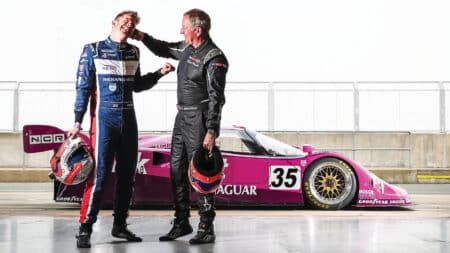
Martin Brundle back in Group C Jaguar XJR-12
The look on Martin Brundle’s face the minute he walks into the garage at Silverstone is a picture. There’s an instant flicker of recognition. The same reaction as meeting an…
The clues to greatness were there to be seen, even in that first car. Professor Ferdinand Porsche’s passion for motorsport rivalled even that of Enzo Ferrari, and when he and his son Ferry created the first Porsche road car, motorsport would gain one of its most enduring icons. The 356 set a template, a design philosophy, that serves Porsche on road and in racing to this day. Simply put, the car was aerodynamic when that was uncommon, light in a world of leviathans, stupendously reliable and efficient in all senses of that word. And victorious from day one.
In fact, the very first road car out the door of the plant in Gmund, Austria – to which the Porsches had retreated after the war – was campaigned by its owner, taking victory in a minor, but hugely symbolic event at Innsbruck during the summer of 1948. Ferdinand Porsche, sadly, did not live to see the factory seriously embrace racing, though he did sketch out the lines of a low-drag 356 racer which, he figured, could win its class at Le Mans; but by then the reins had been handed to the pragmatic and conservative Ferry. During the early 1950s, a madly enthusiastic French importer had been pressing Ferry Porsche to bring his cars to Le Mans. He came, and saw for himself in 1951 that the little 356s contained the stuff of victory. Porsche watched as a scarcely modified 356 circulated consistently and reliably, using an average 87mph of its 99mph top speed on every lap. The car duly claimed class victory. For Ferry, that race was the physical expression of the company’s never-abandoned philosophy.
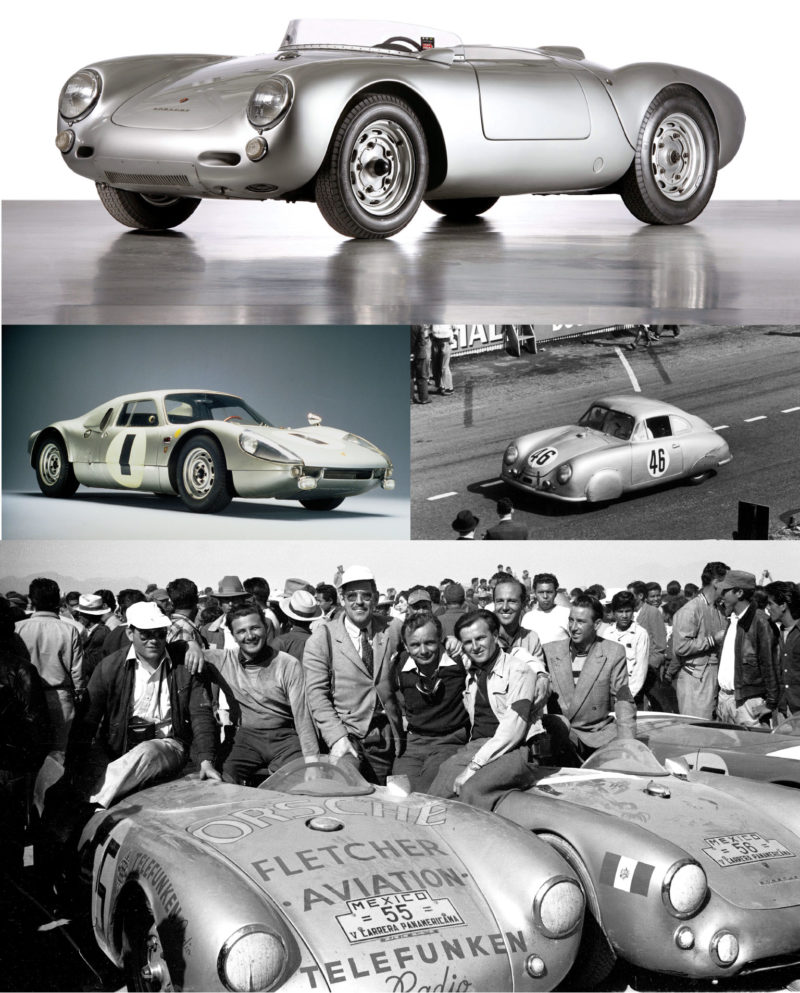
Clockwise from top: The 550 Spyder took over from the 356; the lightweight 356 SL, complete with aerodynamic wheel spats; at the Carrera Panamerica in 1954 with a 550 Spyder in Buenos Aires; the 904 Carrera GTS
It carried on with the even more spectacularly successful 550, launched in 1953. Its four-cam engine produced 110bhp at 7000rpm – in RSK form the engine delivered 155mph from 148bhp at 8000rpm – good enough to put Porsche on the podium 15 times that year. And nowhere was the car’s mettle more tested than on the gruelling Carrera Panamericana, where a 1600cc 550 took a class victory with José Herrarte at the wheel.
The legend grew; the guiding hand behind Porsche’s burgeoning race success, Fritz Huschke von Hanstein, would ensure that the marque’s presence in motorsport would spread ever wider. But while it has been said that von Hanstein was to Porsche what Alfred Neubauer was to Mercedes, that falls far short of the mark. Where Neubauer restricted Mercedes’ relatively infrequent forays into motorsport with grand prix and sportscar racing, von Hanstein was keen that Porsche be as feared on the rally stages as on the rumble strips. That meant endless development and innovation.

Ferdinand (left) and Ferry Porsche
As always, lightness, efficiency and the relentless pursuit of reliability would figure in all Porsche did. When the 904 GTS was conceived, it was the first foray Porsche had made into glass-fibre bodies. The result was an ultra-light body shell – held aloft by two young women in the publicity stills – mounted on a fabricated chassis frame. The hard points were 2-litres, 180bhp and 165mph.
But even Zuffenhausen was fallible; the prettiest Porsche to date made its race debut at the Sebring 12 Hours. In one of its most important market debuts, the new Porsche finished a dire 20th, the result of clutch trouble. Time then, for Porsche to display another trait that helps explain its domination of sports racing throughout the ’60s and ’70s. It just tries harder the next time around.
The 904 GTS had its first European outing on the Targa Florio in 1963. With Jo Bonnier and Carlo Abate at the wheel, a 904 took overall victory, with second, sixth and seventh place also occupied by the Dino-esque Porsche coupé.
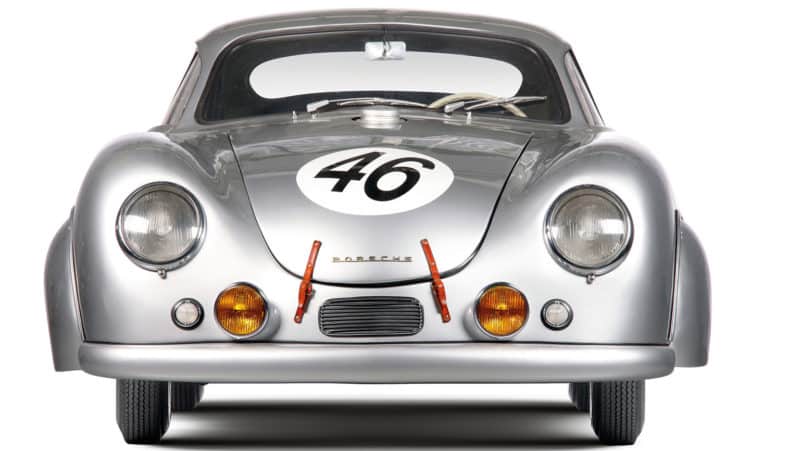
The lightweight 356 SL that Ferdinand had likely always envisioned
Rallying, too, was always going to be a Porsche speciality, embraced as an integral part of its motorsport program, Indeed, the 356 had established early on its fitness for duty, with that rear-engined weight bias and those indestructible mechanicals. Porsche’s storming of rallying’s jewel, the Monte Carlo, is good evidence of the company’s single-minded approach; Porsche enjoyed four class wins between 1962 and ’67, with three overall victories going to the 911.
The company’s first outright victory came to Vic Elford and navigator David Stone in 1968. The margin reflecting Porsche’s legendary preparedness was huge. In fact, second place overall also went to a 911, piloted by Henri Toivonen and Martti Tiukkanen. Dejected BMC pilot and third-place man Rauno Aaltonen reportedly said at the Monaco finish, “If I’d had another 100bhp, I could have competed.”
And then another signal victory in 1984. When Mercedes-Benz G-wagen driver Jacky lckx took overall victory in the sand-blasted 6000 mile Paris-Dakar Rally in 1983, Porsche’s interest was piqued. So much so that the company decided to field three four-wheel drive 911s for the next year’s event. The absolutely punishing marathon was, almost inevitably, won by one of the 911s. And then Porsche came back in 1986, with the wildest rally car yet in its history. The 959 boasted 400bhp from its 2.8-litre turbo-charged ’six and a six-speed gearbox. It just ran away with the event, with René Metge and Dominique Lemoyne finishing first. This time, though, another duo of 959s finished second and sixth. And while the Paris-Dakar rally marked the end of Porsche’s official involvement in rallying, the 959 lived on as a road car, developed as Porsche’s most ambitious supercar project yet. The technical boss for the 959 program, Roland Kussmaul, moved on to develop the 961, basically a circuit-based version of the 959.
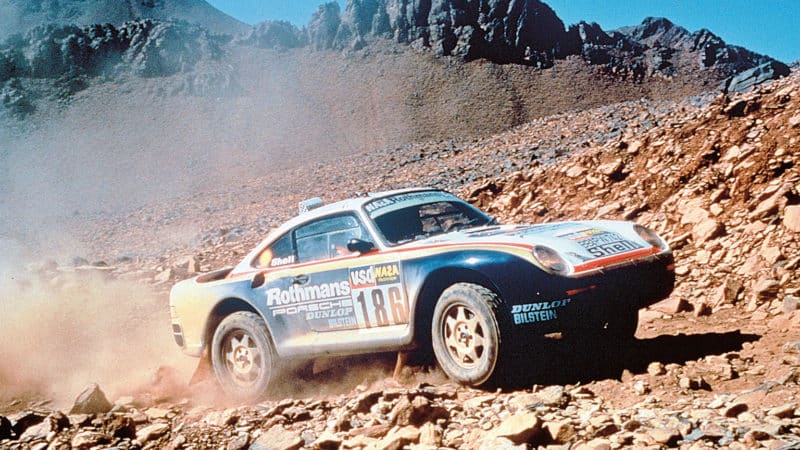
The fearsome 959 Dakar challenger, at home in the dunes
To the rallying, sportscars, GTs portfolio, add a surprisingly big Formula 1 presence. Once again, it is Porsche’s thoroughness in engineering and preparation that brought success. It’s easy to forget that in 1960, Porsche took victory in the Formula 2 Championship with the 718, running to regulations that Formula 1 would adopt the following year. And while it is better known in Formula 1 for its engines, there’s no forgetting that Porsche fielded, if only briefly, its own grand prix car.

The 911 of Toivonen and Tiukkanen dominated the 1968 Monte Carlo Rally
Much later and perhaps much more famously, McLaren deployed the 1.5-litre 750bhp Porsche-designed TAG V6 turbo engine in its MP4/2 during the 1984 season. The result was another piece of F1 history; that Porsche engine powered the McLaren to 12 victories in 16 races, handing the title to Niki Lauda in the process. Between them, Alain Prost and Niki Lauda won 22 out of 48 grands prix held between 1984 and ’86.
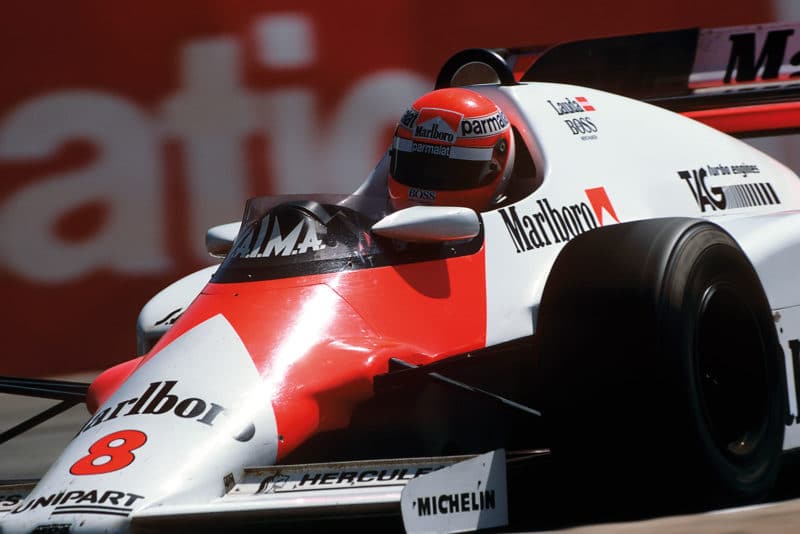
Lauda secured his thid and final F1 title in a Porsche-powered McLaren
In fact, the list of F1 drivers who have raced Porsches on the way to the top of their careers is one that comprises most of the greats from the past few decades. To name but a few: Ayrton Senna, Stirling Moss, Damon Hill, Alan Jones, Mario Andretti, Jochen Mass and Derek Warwick.
But it was the prototype 910 in 1967 that signalled the depth of Porsche’s giant-killing aspirations. The car had echoes of the Carrera 6’s gull-winged supercar styling and would lay the foundation for the greats to follow, first in the form of the 907. That car made its first appearance before an amazed audience at Le Mans in 1967. It finished fifth overall, not a bad result, but not good enough; in the Porsche way of things, the car’s development continued apace, resulting in the far more competitive 908. That car produced a victory at the Nürburgring and third place at Le Mans in 1968. Good results, but just a teaser of what lay around the corner.
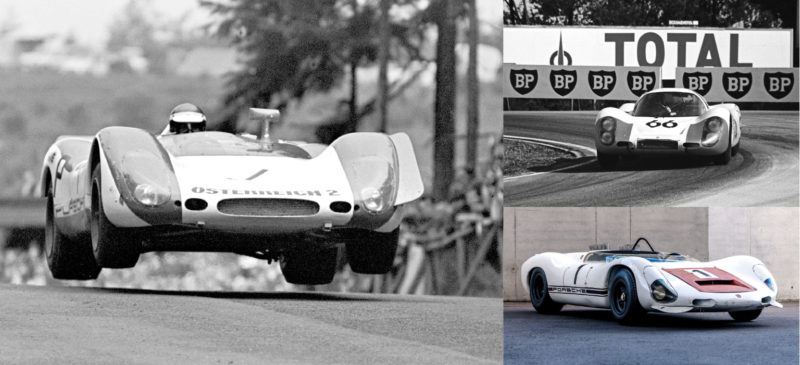
Clockwise from left: The 908 catches some air at the Nürburgring; a 907 long-tail at Le Mans in 1968, two years before the 917 made history; the 910 Bergspyder, which won the 1967 European Hillclimb Championship
For 1968 was also the year that von Hanstein would be replaced in the racing department by Ferdinand Piëch, grandson to Professor Porsche and the driven soul behind VW’s current frenzy of acquisition. Piëch’s genius includes one of the greatest credits an engineer can produce; one of his first tasks at Porsche had been to design the 911’s flat-six, but his real legacy would come with the 917, and a commitment to the highest reward that Le Mans offers. Worth repeating. It’s all about preparedness and development and nobody does that better than Porsche. Renowned car historian Karl Ludvigsen reckons Porsche’s recent decision to move away from motorsport is unlikely to be permanent: “It’s a shame that Porsche is going out on a bit of a downer. Sure, it did well at Le Mans, but it seems to have floundered everywhere else. But I doubt it’s a decision it would take forever and ever. Porsche will be back when it sees the right opportunity.” And deservedly, reckons Ludvigsen; “As far as I’m concerned, the 550 was the sportscar of all-time in terms of winning for both factory and private entries. But the really dramatic period for Porsche was through the 910 to 917.”
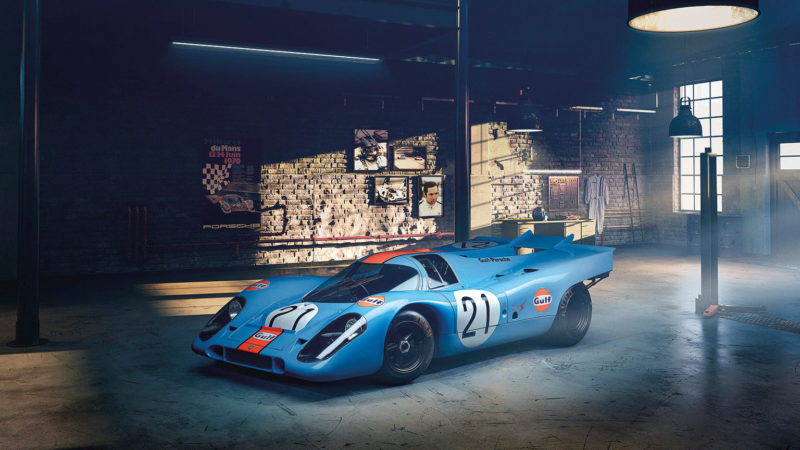
The 917 in glorious Gulf Oils colours
Le Mans 1970 and the 917. Perhaps one of Porsche’s greatest moments ever, celebrated elsewhere in this magazine. That car and that victory were the ultimate reward for decades of single-mindedness, an expectation of nothing less than perfection.
One of the most experienced chroniclers of Porsche’s history, Julius Weitmann, had a pretty defining take on it all in the foreword to his book, Porsche Story. “It is by way of tribute to a handful of men who, on alien soil and starting with nothing apart from unbelievable idealism, began to work without knowing where their way would lead, and with one goal only – to create something after all had turned to smoke and dust.”
They’ll be back.

The Salzburg car that finally won Le Mans for Porsche in 1970